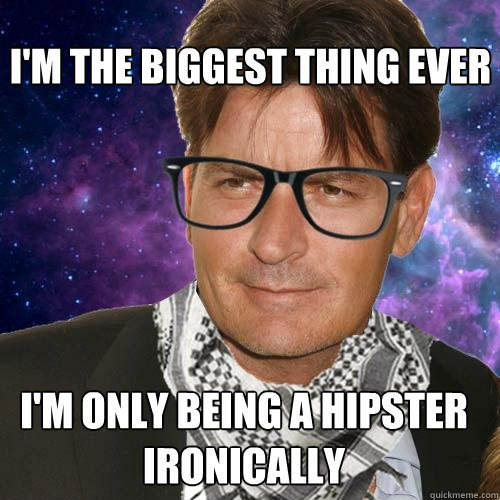This is something I wrote for class because I'm too school for cool.
We've all seen it: the ostentatious medallion hanging around the neck of a wealthy performance artist.


The name was popularized by a 1999 song with the title Bling-Bling. The term "bling" refers to the bling-bling of light reflecting off the facets of the jewelry. This is key - it must be ornate, gaudy, a blatant display of the economic power of the wearer. Traditionally, blacks are seen as poor and lacking in social status, so the in-your-face consumerism of bling can be seen as an empowering reaction against such negative stereotypes. This is known as conspicuous consumption. So why consume conspicuously? Well, let's use bling as an example. When we think of a middle-class white adolescent wearing bling, the reaction is probably something similar to this:
 |
| I noticed that you're gangster... I'm pretty gangster myself. |
We mock people like that, because we see them as trying to pretend to be what they're not, aka a poser. We wouldn't do that if stuff is just stuff, clothes are just clothes, and each individual has a unique style. Conspicuous consumption isn't just about wealth and self-expression, it's about identifying with a particular social caste or sub-culture. As social creatures, we not only have an individual identity, we have a group identity. We subconsciously label ourselves, even those of us who reject labels, by how we dress. The bling-laden white boy in the West County suburbs isn't showing pride in his identity, he's engaging in an insensitive type of conspicuous consumption known as cultural appropriation.
Specs (aka Hipster Glasses)
Hipsters are a group of people who typically don't identify themselves as being a collective group of people for the simple reason that they share a common distaste for personal labels. They're the natural result of our cultural cult of individuality taken to the extreme. As such, they reject conspicuous consumption because that could potentially cause them to be mistaken for a member of a particular social caste (a practice which often causes them to be so rejecting of any culture close to themselves that the only option they have left is severe and shameless cultural appropriation). And for a while, they were successful at being beautiful and unique snowflakes.
But a funny thing happens when enough people reject the concept of social castes - they become a social caste of people who share that common rejection. This is where hipster irony is born.

Specs like these are nothing new, not at all. Horn-rimmed glasses actually got their kick start in 1917 by actor Harry Lloyd. They became rather popular in the 50s as well. Some people never stopped wearing them. So why do hipsters love them so? Simple: they're ugly. I mean, seriously. They're so ugly, in the military they're known as BCGs - birth control glasses. (They're the only style allowed at basic training [update: the military's policy has been changed since this paper was written].)

(Tasty.) Hipsters caught on to the extreme unpopularity of these glasses and began wearing them ironically, as a rejection of conspicuous consumption. Only, it caught on and became popular among the totally-not-at-all-affiliated-with-each-other hipsters themselves, and became a "hipster thing", to the point where it's now it's own meme. That's right, you can take any image, add glasses, and it's instantly hipster.
 |
| I'm the biggest thing ever - I'm only being a hipster ironically. |
"A hipster can be so emphatically, conspicuously hipster that he becomes a predictable caricature or stereotype so that he becomes, unwittingly, anti-hipster." Ironic, isn't it?